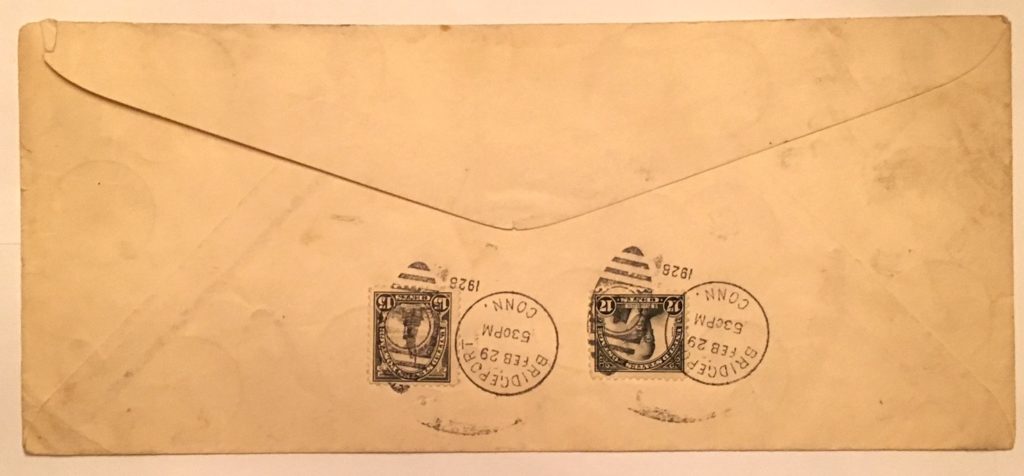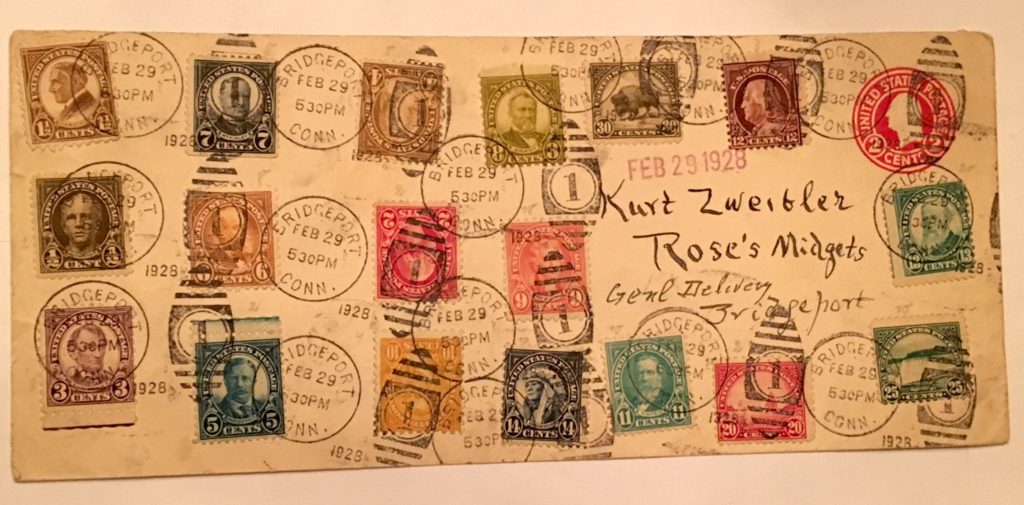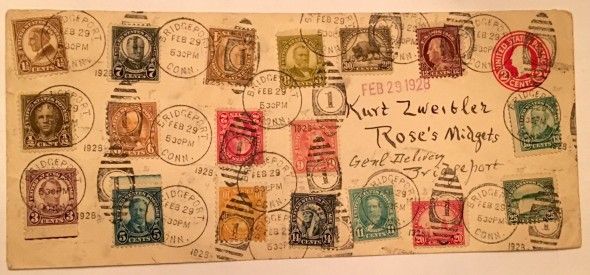A Little Person Inspires a Big Cover: A Leap Year Curiosity
Every fourth year, an extra day in our calendar resynchronizes earthly time with cosmic time, creating what is officially called a bissextile year, or Leap Year. This year, February 29, 2016, is that Leap Day. Since the thirteenth century, tradition has allowed ladies to legally propose marriage during this year; the gentlemen were obliged to accept. Considering the restrictions on women’s freedoms for so long, the privilege to declare their love was quite astonishing, with customs and celebrations a merry excuse for parties, games, and wedding proposals. Leap Year memorabilia for collectors include lace or comic Valentines, Ball invitations, popular “Sadie Hawkins” dance programs, and an enormous range of amusing postcards, primarily from the early 1900s.
While I am not a philatelist, a unique cover, canceled at exactly 5:30 PM on Leap Day, 1928, fascinated me. The range of stamps includes almost every denomination, from half-cent, to twenty cents, excepting the one, sixteen, eighteen, and nineteen, plus twenty-five cents and thirty cents, of the Regular Issues between 1922 and 1928. With such an array of colorful and pictorial definitive stamps elaborately spread across the envelope, it has quite an intriguing appearance.
I do, however, collect stories, and holding this cover made me want to learn more about it. What could have required $2.15 postage, eighty-eight years ago? And why was this letter, addressed to Kurt Zweibler, Rose’s Midgets, Genl Delivery, Bridgeport, mailed in the same city on Leap Day, 1928?
The theatrically successful midget, Kurt Zweibler, had been recruited in Germany to be a part of this Lilliputian spectacle and would remain with the show for at least twenty years. Bridgeport had a population of nearly 140,000 and one would think the envelope could never reach the addressee. Nevertheless, Ike Rose’s Twenty-five Royal Midgets was a sensational revue at the Palace Theater, and everyone knew of them. Delivery was assured. Every show packed an audience of more than three thousand people, clamoring for the famed extravaganzas, which had been described in a newspaper review as “a galaxy of costumes and gorgeous scenic and lighting effects…used to perfection…musicians, jugglers, acrobats, comedians…” One can imagine they received enormous quantities of fan mail. Perhaps this envelope delivered a Leap Year Proposal?


In 1928, an article by Leroy Vincent appeared in Boy’s Life Magazine, titled, A Visit to Dwarf Land! It was enlightening and mesmerizing. On the very same page, an advertisement for “A Packet of Curious Stamps” was just one of the numerous ads designed to capture boyish imagination, and inspire youthful collectors to become philatelists. Might there be a connection? Could a juvenile philatelist have been inspired to send a magical missive to a performer depicted in his favorite magazine?
These are questions we may never answer. Even a super-sleuth might never solve these mysterious questions, but the process is part of the joy of collecting. The vast resource of pertinent material on the Internet makes the activity a real adventure, connecting facts and dates and history with real research. This envelope, mailed on February 29, 1928, led me on a guided tour into the fascinating era of gloriously majestic theaters, traveling cavalcades of midgets, sideshow carnival characters, and a world of summer hotels and outdoor carousels. It was quite a ride, and all inspired by a curious cover.

